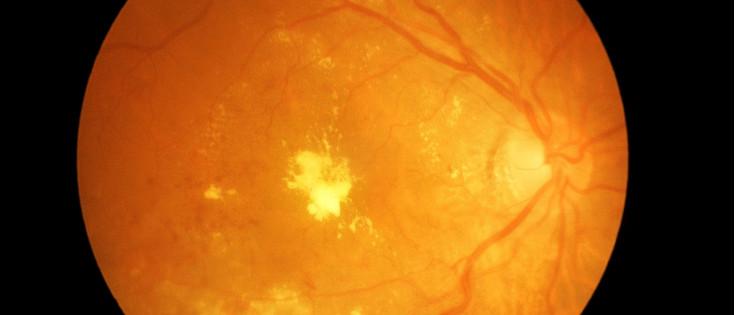Diabetes and your eyes
Diabetic eye disease – including diabetic retinopathy (DR) and diabetic macular oedema (DMO) – is a complication of diabetes.
Diabetes is a complex, chronic condition characterised by high blood glucose (sugar) levels. Over time, diabetes can affect many parts of the body including your eyes because of changes to blood vessels and blood supply.
Diabetes can affect your eyes in several ways. That’s why it’s important to have a comprehensive eye exam as soon as you’re diagnosed with diabetes, then continue to have regular eye examinations. You should maintain these appointments even if you don’t notice any symptoms. Early detection and treatment is the best way to prevent vision loss.
If you don’t currently have an optometrist, you can find one in your local area using our search tool.
Diabetic eye diseases can include cataract, glaucoma and transient blurring of vision. If you’d like more information about these conditions, have a chat with your eye health professional (optometrist or ophthalmologist).
Our focus here is on diabetic retinopathy and its various stages – non-proliferative diabetic retinopathy, proliferative diabetic retinopathy and diabetic macular oedema.
Careful control of diabetes can delay the onset or even reverse the progression of diabetic retinopathy.
Prevalence
Approximately 1.7 million Australians have diabetes. This includes 1.2 million with diagnosed (known) diabetes. An estimated 500,000 Australians have undiagnosed type 2 diabetes.1
It’s important to know that everyone with diabetes is at risk of diabetic eye disease.
Diabetic retinopathy is the leading cause of preventable blindness in working-age Australians.
The longer you have diabetes, the greater the likelihood of diabetic retinopathy. Almost everyone with type 1 diabetes will develop some form of DR within 20 years of diagnosis. For people with type 2 diabetes, more than 60 per cent will develop DR within the same time frame.2
An estimated two million Australians will be living with diabetes by 2025. Of course, this growth will lead to a similar increase in statistics for diabetic eye disease and vision loss.
Reducing your risk
Most vision loss from DR can be prevented. That depends, however, on early detection and taking steps to keep the disease under control.
Download now or visit 'Resources' and we'll send you a FREE copy in the mail.
DownloadHowever, not all risk factors for diabetic retinopathy can be controlled. Knowing if you have these is important to determine whether you need to visit your eye health professional more frequently.
It is important to know that diabetic eye disease can progress to advanced stages, before you notice any changes to your vision.
Regular eye exams are vital and the only way to diagnose diabetic retinopathy. But you should be aware of the symptoms. If you notice any changes to your vision, visit your optometrist or ophthalmologist.

Good diabetes management together with early diagnosis and treatment of eye disease improves the likelihood of saving sight. There are effective treatments available for diabetic retinopathy and diabetic macular oedema.
Download now or visit 'Resources' and we'll send you a FREE copy in the mail.
Download








